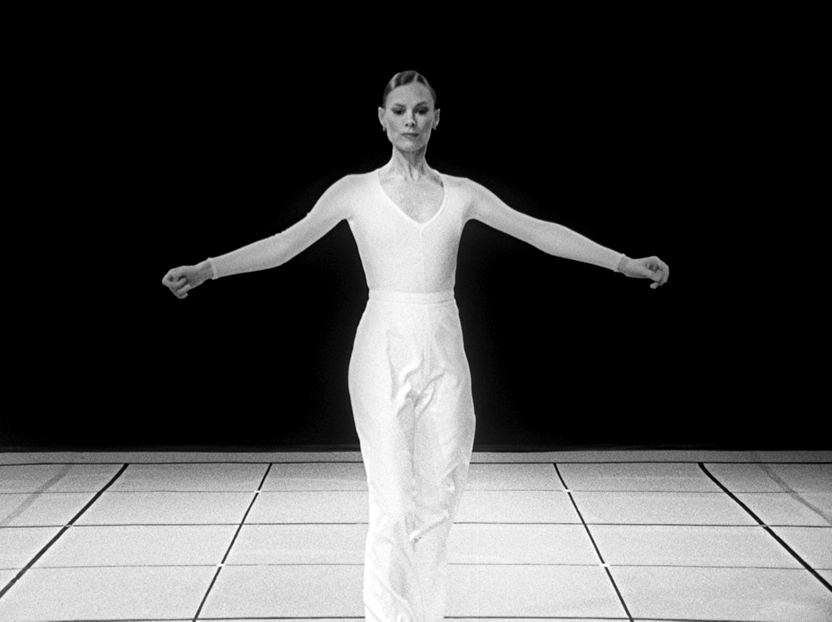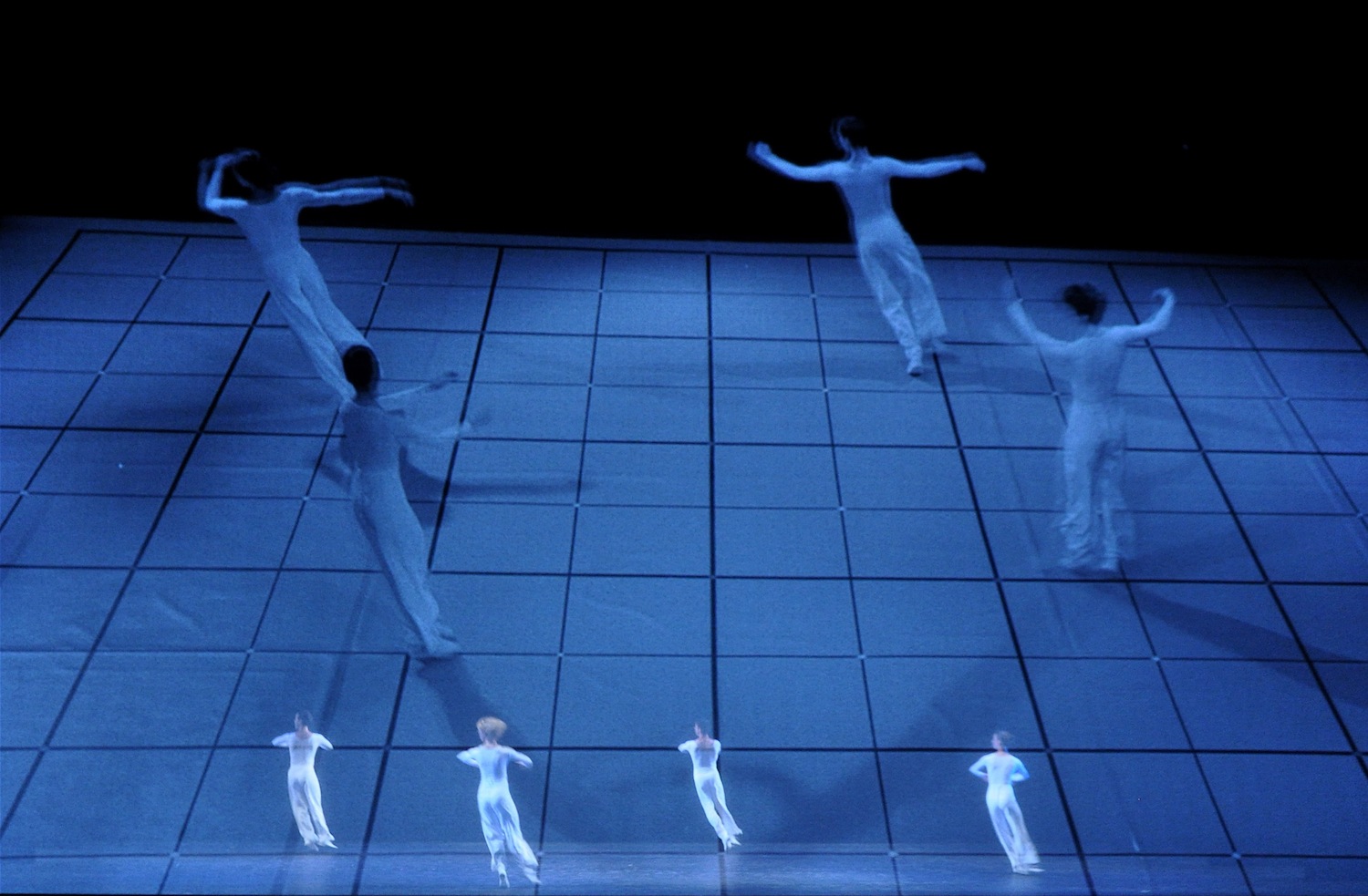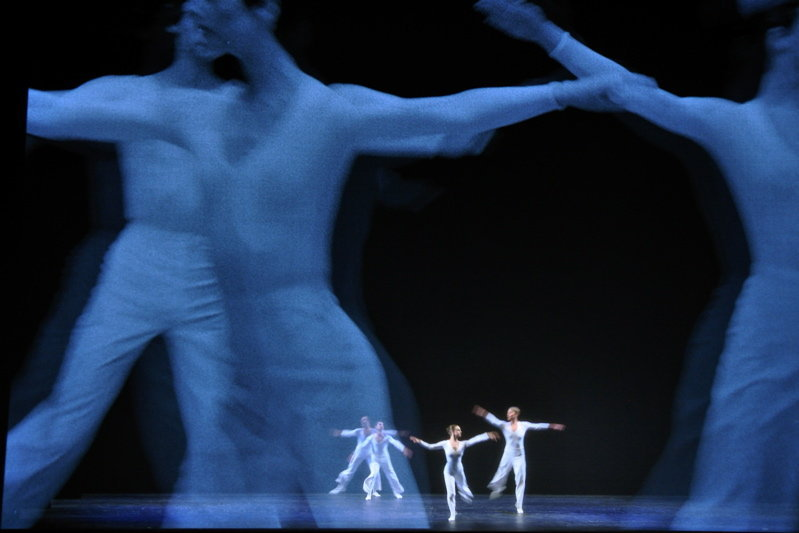There are various disinterments of supposedly iconic dance-makers going on in this year's Dance Umbrella (some live ones more dead than the dead ones), but no one is going to beat for sheer éclat Lucinda Childs’ astonishingly beautiful minimalist 1979 creation Dance, on this week at the Barbican.
Minimalism is now a comfortable old sofa for today’s generations of dance-watchers, often handed very small platefuls of ideas, but this 60-minute piece has an understated poise and rich cleverness that shows American modern dance at the very top of its artistic game.
Typically of this cool blonde US operator, then 39, her collaborators were top-notch - her contemporary Philip Glass for the music, the conceptual artist Sol LeWitt for the film that jousts so happily with the dancing. The product is an hour of nothing but minimally altering dance, about as exhilarating an experience as it’s possible to have legally, and twice as unlikely, if you’re used to dance as a lush, romantic spectacle.
 Here’s will-o’-the-wisp filming of dancers on a gauze layered over real dancers performing the same dance in the same clothes in precise sync - only 30 years apart (pictured right, Lucinda Childs herself, in the 1979 film). The figures skip and skitter, blowing about in X-figures as arms strike the same upward gesture and legs swing out in a motif that’s almost Fred Astaire, as gravityless as ticker tape. The motif repeats over and over, and it’s not simple, you soon become aware; it is a rather complex little charm of steps that from the start of the hour to the end of the hour has to be done with an identical lightness of spirit and precision, without breathlessness or sweating or any outward sign of effort.
Here’s will-o’-the-wisp filming of dancers on a gauze layered over real dancers performing the same dance in the same clothes in precise sync - only 30 years apart (pictured right, Lucinda Childs herself, in the 1979 film). The figures skip and skitter, blowing about in X-figures as arms strike the same upward gesture and legs swing out in a motif that’s almost Fred Astaire, as gravityless as ticker tape. The motif repeats over and over, and it’s not simple, you soon become aware; it is a rather complex little charm of steps that from the start of the hour to the end of the hour has to be done with an identical lightness of spirit and precision, without breathlessness or sweating or any outward sign of effort.
The dancers are spotless in all-white, with fine flared trousers and white shoes; their hair is so immaculate in chignons that those with crops look unkempt. Men and women, almost interchangeable, move as if every detail has been polished for centuries. They carry their arms with the grace of ballet dancers, they put demi-pointe foot to floor with a thoroughbred fastidiousness. They are paper dolls bouncing up and down, as little on the ground as in the air, yet they catch a tiny breath of air on every skip (what’s called ballon in the trade) as if they contain a secret bubble of helium.
The music teases with its endless foreplay, strumming away, never reaching climax, replenished only by time, not sensation
Glass's music scrapes and squeaks out its wall-eyed repetitions in a tonality of frantically bubbling flutes and organ arpeggios that catches the fillings in your teeth. It teases with its endless foreplay, strumming away, never reaching climax, replenished only by time, not sensation.
One’s almost in a room with three different temperaments: the impotently frigging Glass, the imperturbable, passive-aggressive Childs, the discreetly romantic LeWitt. Yet Childs presides over all, lashing the elements deftly together with a poet’s eye.
Her mingling of live dance and film dancing, of past and present, of 2D and 3D, is blithe, joyous (it is impossible to tell if the dancers are joyful). LeWitt’s 1979 filming seizes the chance to be capricious, and takes off on visual descants over the reel of the live performers, with its changes of viewpoints or multiplication of frames, or its sudden absenteeism, or its brusque irruption over the steadiness of the dancing.
After a time you find yourself second-guessing the music, the dance, the film, to see if a change, let alone a conclusion, is in the offing - soon you settle down and realise that this is increasingly unnecessary.
 As Lucinda Childs describes her dances, “It is what it is,” and there is a surprisingly large comfort in that. You stop trying to control the scene, the story, with your associations, and you surrender to the willingness of the dancers to be young forever, to be tireless forever, to take pleasure forever in moving, in skipping, in vanishing.
As Lucinda Childs describes her dances, “It is what it is,” and there is a surprisingly large comfort in that. You stop trying to control the scene, the story, with your associations, and you surrender to the willingness of the dancers to be young forever, to be tireless forever, to take pleasure forever in moving, in skipping, in vanishing.
Comparisons float into the head - Merce Cunningham’s BIPED, a magical fusion of digital avatars and dancing people, Jonathan Burrows’ coolly brilliant Stop Quartet, Anne Teresa de Keersmaeker’s ingeniously repetitive Fase, or Twyla Tharp’s In the Upper Room, another non-stop dance to Philip Glass, but one personalised with more obvious incidental dramas.
But the thing about Lucinda Childs’ Dance is its absolute clarity and sureness, the clean, white-cold alcohol shot of a vodka Martini without fuss, pure and distilled. An hour of it in three 20-minute parts is a perfect measure. It’s by no means the only way to fall in love with dance, but my word, it’s intoxicating.
- Lucinda Childs Dance Company performs Dance at the Barbican Theatre at 8pm nightly till Saturday, 22 October; a film portrait of Childs is shown on Saturday in the Barbican Cinema at 5pm
- Other Barbican events reviewed on theartsdesk














Add comment